
physical education inquiry project for second graders
- Subject:
- Arts and Humanities
- Material Type:
- Interactive
- Date Added:
- 10/10/2016

physical education inquiry project for second graders
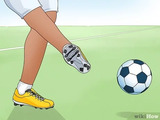
This is a lesson on how to teach proper passing technique in soccer including a passing activity to help assess how students are doing.
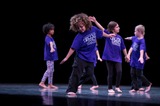
This lesson, developed by Pacific Northwest Ballet Community Education Programs, is designed to help K-2 students explore concepts about self and general space that are a part of all dance styles as well as creating their own movements. The lesson addresses fitness and health academic content, motor skill development, and social emotional learning.
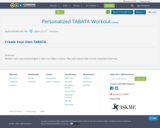
Students will create and participate in their own Tabata workout. They will evaluate their success using their heart rate.
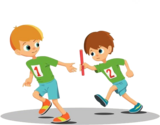
Students will run and grab cards and perform a certain workout that goes with each card. Once workout is done, next student may run down and get a card. Once cards are gone, group with most cards win.

This is a Physical Education resource to be used to expand Physical Education programs to the larger community. This resource includes a downloadable document that teachers may edit and revise to match the needs of their students and program. The calendar template can be used for different months and is met to be a resource for students and their families.
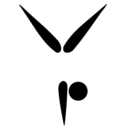
The attached resources can be used at the end of an educational gymnastics unit. The planning tool can be used to assist students as they design their own gymnastics series/routines, while the rubric allows teachers to assess performance of the designed routines. Teachers should designate multiple lessons in order to provide ample time for students to design, practice, and perform routines as a culmination to the unit. Be sure to set clear guidelines for students regarding the skills that they may include in their routines. Prior to creating routines, each gymnastics skill should be explained with thorough safety instructions, demonstrated for students, and practiced in a variety of learning tasks.Cover image: "Gymnastics" by Clker-Free-Vector-Images from Pixabay.com
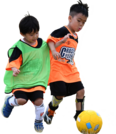
This unit is presented as a series of progressive tasks. Each learning task can be used to reach one or more of the applicable outcomes and may be taught as one lesson or part of a lesson. Teachers are encouraged to select learning tasks that best fit their teaching style and students’ needs. Modifications, accommodations, and extensions specific to your learners are strongly recommended. The suggested assessments are designed to give teachers ideas related to each task.Prior to the learning tasks, the standards, applicable exit outcomes, focus and subfocus skills/concepts, and critical skill elements are listed within the overview.Cover image: "Soccer" by monica_aulich from Pixabay.com AttributesGraham, G., Holt/Hale, S. A., & Parker, M. (2013). Children moving: A reflective approach to teaching physical education. 9th ed. New York: McGraw-Hill.SHAPE America Standards and Grade-Level Outcomes
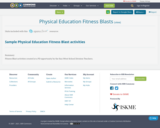
Fitness Blast activities created at a PD opportunity by the Sun West School Division Teachers.
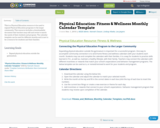
This is a Physical Education resource to be used to expand Physical Education programs to the larger community. This resource includes a downloadable document that teachers may edit and revise to match the needs of their students and program. The calendar template can be used for different months and is met to be a resource for students and their families.
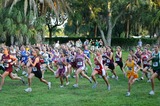
The attached resource is a simple tool for students to record their Fitnessgram data and set a personal fitness goal. It is appropriate for grades four and five, and can be edited to include different fitness tests according to your program needs.Cover image: "Running" by alex4663 from Pixabay.comRelated Exit OutcomesGrade FourCompletes fitness assessments (pre and post). (S3.E5.4a)Identifies areas of needed remediation from personal test and, with teacher assistance, identifies strategies for progress in those areas. (S3.E5.4b)Grade FiveAnalyzes results of fitness assessment (pre and post), com-paring results to fitness components for good health. (S3.E5.5a)Designs a fitness plan to address ways to use physical activity to enhance fitness. (S3.E5.5b)

The attached resource is a simple tool for students to record their Fitnessgram data and set a personal fitness goal. It is appropriate for grades four and five, and can be edited to include different fitness tests according to your program needs.Cover image: "Running" by alex4663 from Pixabay.comRelated Exit OutcomesGrade FourCompletes fitness assessments (pre and post). (S3.E5.4a)Identifies areas of needed remediation from personal test and, with teacher assistance, identifies strategies for progress in those areas. (S3.E5.4b)Grade FiveAnalyzes results of fitness assessment (pre and post), com-paring results to fitness components for good health. (S3.E5.5a)Designs a fitness plan to address ways to use physical activity to enhance fitness. (S3.E5.5b)

Kid-friendly visuals for students are imperative to include in your gymnasium decor. The following resource includes five seperate PDF files. Each file contains a kid friendly visual for the SHAPE America's Standards. These may be posted in your gymnasium where you see fit. Standards have been remixed from the, "National Standards & Grade Level outcomes for K-12 Physical Education," book. The Grade-Level Outcomes for K-12 Physical Education can be found here: SHAPE America
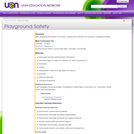
After completing the activities in this lesson, students will understand the importance of playground safety.
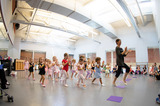
This unit is presented as a progression of tasks that allow students to explore movement through a variety of creative tasks. Students will move in personal and general space, while exploring elements of shape, size, speed, force, flow, and time. To promote student confidence and willingness in dance, teachers should isolate the dance elements before asking students to apply these elements using imagery or partner/group tasks.Photo Attribution: KCBalletMedia (Photography: Brett Pruitt & East Market Studios)References:Graham, G., Holt/Hale, S. A., & Parker, M. (2013). Children moving: A reflective approach to teaching physical education. 9th ed. New York: McGraw-Hill.Joyce, M. (1994). First steps in teaching creative dance to children. California: Mayfield Publishing.

This unit is presented as a progression of tasks that allow students to explore movement through a variety of creative tasks. Students will move in personal and general space, while exploring elements of shape, size, speed, force, flow, and time. To promote student confidence and willingness in dance, teachers should isolate the dance elements before asking students to apply these elements using imagery or partner/group tasks.The National Standards and Grade-Level Outcomes in this unit are referenced from the "National Standards & Grade Level Outcomes for K-12 Physical Education."SHAPE America Outcomes:KindergartenPerforms locomotor skills in response to teacher-led creative dance. (S1.E5.K)Maintains momentary stillness on different bases of support. (S1.E7.Ka)Forms wide, narrow, curled and twisted body shapes. (S1.E7.Kb)Contrasts the actions of curling and stretching. (S1.E10.K)Travels in general space with different speeds. (S2.E3.K)Recognizes that when you move fast, your heart beats faster and you breathe faster.3 (S3.E3.K)Follows directions in group settings (e.g., safe behaviors, following rules, taking turns). (S4.E1.K)Identifies physical activities that are enjoyable. (S5.E3.Ka)Grade OneCombines locomotor and nonlocomotor skills in a teacher- designed dance. (S1.E5.1)Maintains stillness on different bases of support with different body shapes. (S1.E7.1)Demonstrates twisting, curling, bending and stretching actions. (S1.E10.1)Differentiates between fast and slow speeds. (S2.E3.1a)Differentiates between strong and light force. (S2.E3.1b)Identifies the heart as a muscle that grows stronger with exercise, play and physical activity. (S3.E3.1)Accepts personal responsibility by using equipment and space appropriately. (S4.E1.1)Describes positive feelings that result from participating in physical activities. (S5.E3.1a)Grade TwoPerforms a teacher- and/or student- designed rhythmic activity with correct response to simple rhythms. (S1.E5.2)Balances on different bases of support, combining levels and shapes. (S1.E7.2a)Differentiates among twisting, curling, bending and stretching actions. (S1.E10.2)Combines balances and transfers into athree-part sequence (i.e., dance, gymnastics). (S1.E11.2)Varies time and force with gradual increases and decreases. (S2.E3.2)Identifies physical activities that contribute to fitness. (S3.E3.2b)Practices skills with minimal teacher prompting. (S4.E1.2)Identifies physical activities that provide self-expression (e.g. dance, gymnastics routines, practice tasks in games environments). (S5.E3.2)Photo Attribution: KCBalletMedia (Photography: Brett Pruitt & East Market Studios)References:Graham, G., Holt/Hale, S. A., & Parker, M. (2013). Children moving: A reflective approach to teaching physical education. 9th ed. New York: McGraw-Hill.Joyce, M. (1994). First steps in teaching creative dance to children. California: Mayfield Publishing.
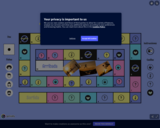
Aquesta activitat interactiva combina el joc de l'oca tradicional amb reptes esportius vinculats amb la condició física, malabars i expressió corporal. L'objectiu és superar les proves per poder avançar de casella a casella fins a arribar al final.
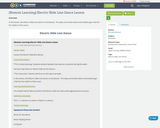
In this lesson, the Electric Slide Line Dance is introduced. The steps are broken down and students get a feel for the rhythm of the music.
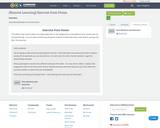
Exercises/Workouts to do from home.
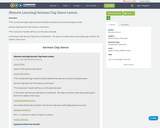
**For remote learning: Students will pick between two dances to practice during the week:German Clap Dance (in this lesson) or Line Dance**For classroom: Teacher will focus on this dance all week.In this lesson, the German Clap Dance is introduced. The steps are broken down and students get a feel for the rhythm of the music.